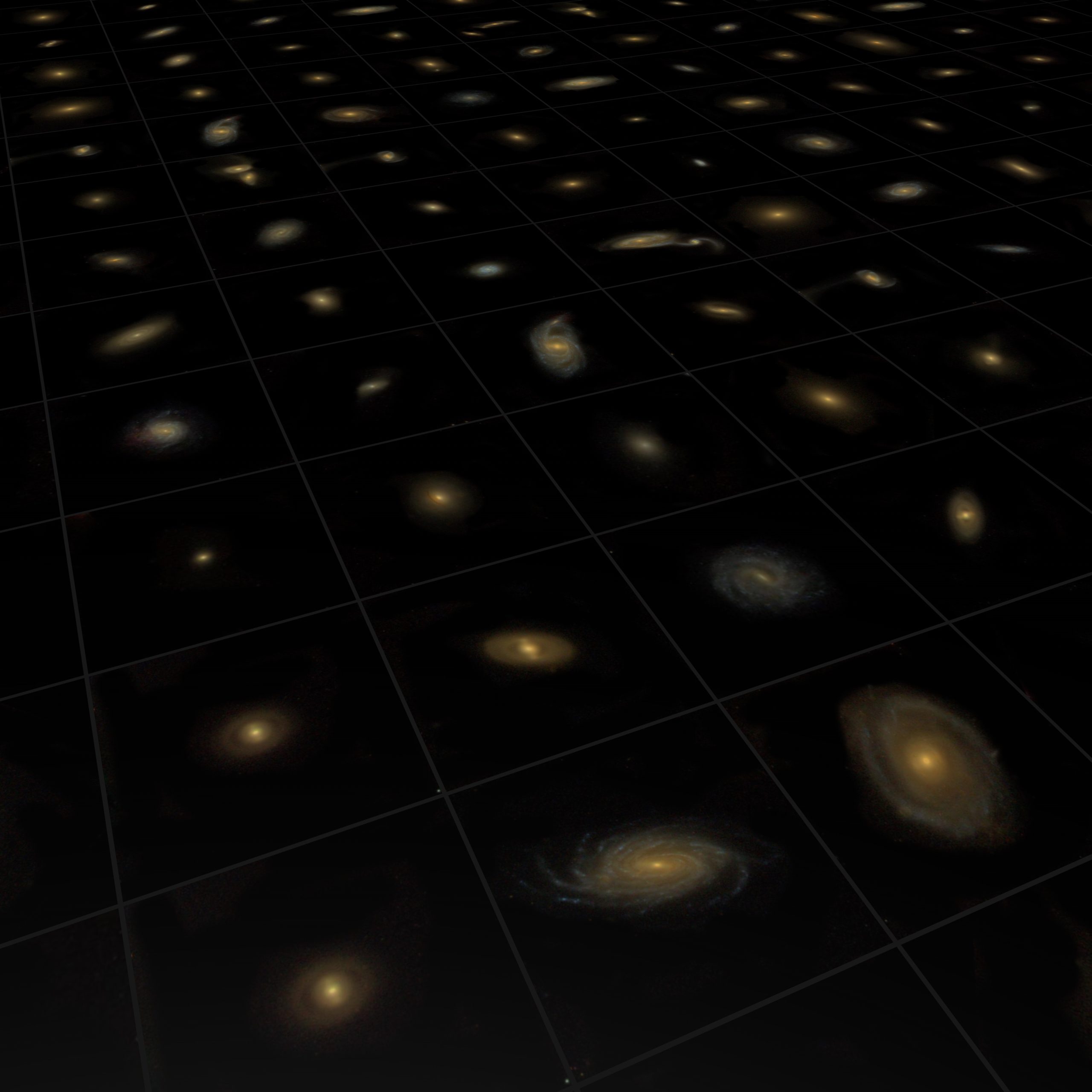A beach made with dust from spiral galaxies
The project explores the concept of simulated universes and the holographic principle. Some notable physicists believe that the universe we live in might be a hologram, and that even though we appear to live in a three-dimensional universe, it might only have two dimensions. In essence the project is an artistic exploration of astrophysical supercomputer simulations of various models of possible universes (virtual simulated galaxies). Simulating a single galaxy would require around 10 to the 48th computing operations.
The project is inspired by the UniverseMachine; an ongoing series of astrophysical supercomputer simulations of various models of possible universes at the Steward Observatory and the University of Arizona led by Assistant Professor Peter Behroozi. His research is on how the evolution of dark matter and dark energy drive the formation of galaxies. One of the results of the study suggests that denser dark matter in the early universe didn’t seem to negatively impact star formation rates as thought initially. It took the supercomputer 3 weeks non-stop calculation time to simulated around 8 million universes. Previous simulations of the universe had trouble producing disk galaxies like the Milky Way. Unlike previous attempts, this simulation naturally process disk galaxies. Galaxies are classified as elliptical, disk or irregular. Currently scientists are training deep learning algorithms to identify even more types and sub-types of galaxies.
Scientific Collaborator: Assistant Professor Peter Behroozi

